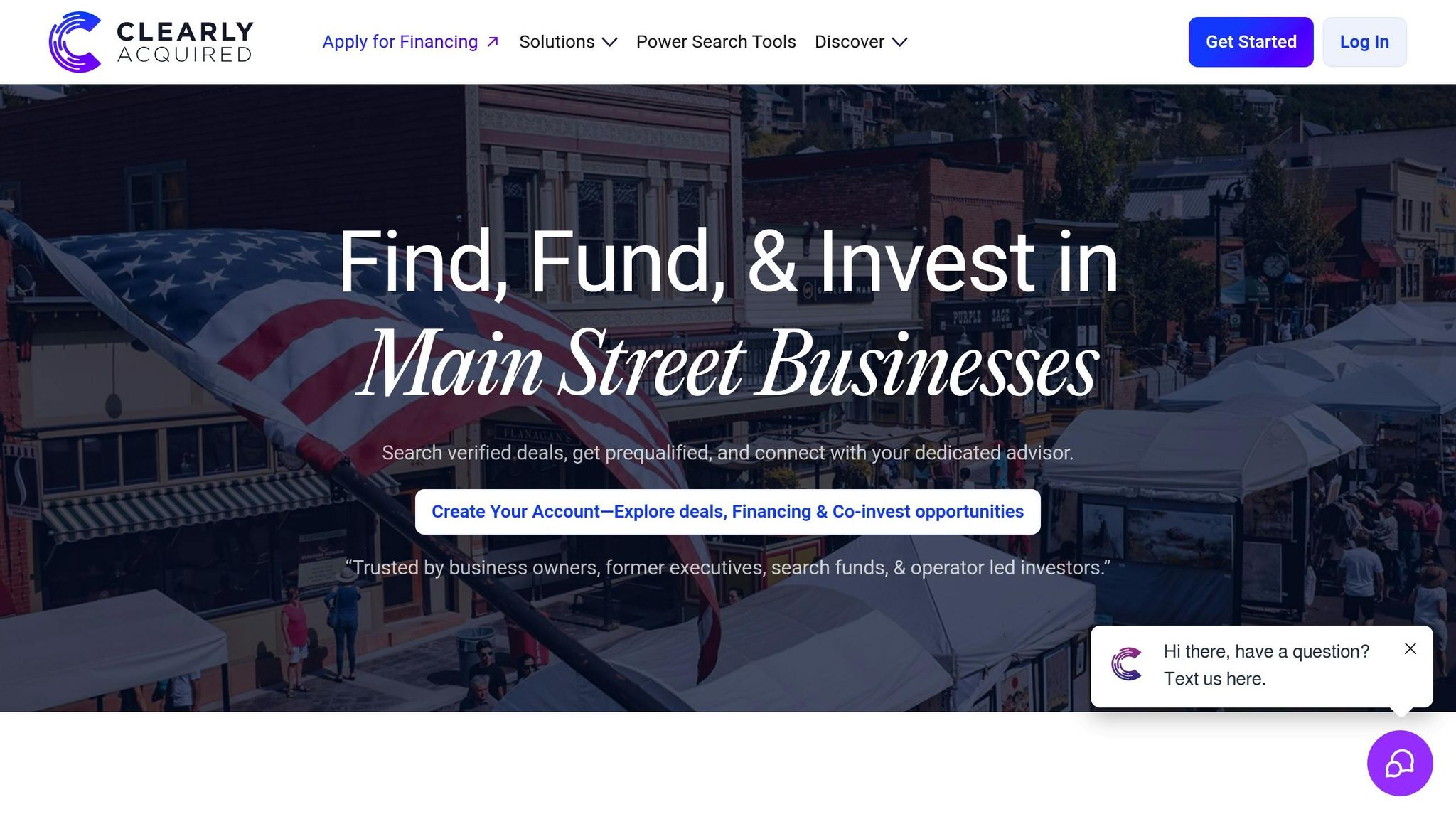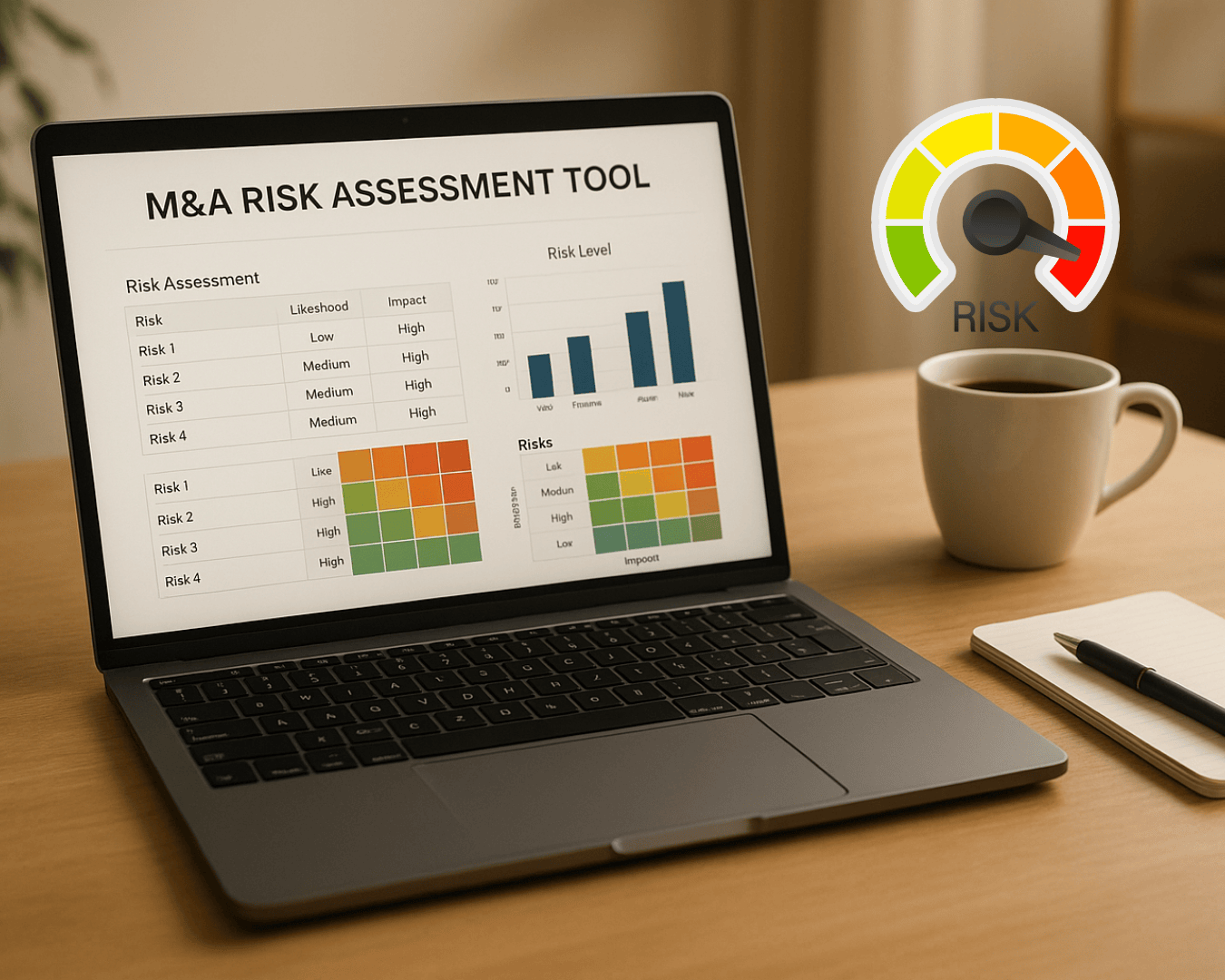First Pass Yield (FPY) is a key metric that measures how many products or services meet quality standards on the first try, without requiring any rework. It directly impacts costs, efficiency, and customer satisfaction.
Why FPY Matters:
- Cost Efficiency: High FPY reduces waste, rework, and labor costs.
- Customer Satisfaction: Fewer defects mean fewer complaints and stronger customer trust.
- Operational Insights: Low FPY signals process issues like equipment problems or training gaps.
How to Calculate FPY:
FPY = (Units Completed Without Rework ÷ Total Units Produced) × 100%
Example: If 218 out of 250 units pass inspection without rework, FPY = 87.2%.
Improving FPY:
- Optimize Processes: Conduct audits, standardize workflows, and use real-time monitoring tools.
- Train Employees: Address skill gaps and provide performance visibility.
- Maintain Equipment: Schedule preventive maintenance and invest in modern machinery.
FPY applies across industries - from manufacturing to services - helping businesses streamline operations and deliver quality results. Tracking and improving FPY ensures better performance, cost savings, and customer loyalty.
What is FTY | First Time Yield | First Pass Yield
How to Calculate First Pass Yield
Tracking First Pass Yield (FPY) accurately is essential for evaluating performance and identifying areas for improvement.
FPY Formula and Its Components
The formula for FPY is straightforward:
FPY = (Units Successfully Completed Without Rework ÷ Total Units Produced) × 100%
Let’s break down the components:
- Units Successfully Completed Without Rework: These are products or services that meet all quality standards on the first attempt. In manufacturing, this means parts that pass inspection immediately. In service-based operations, it refers to transactions completed correctly without needing callbacks or revisions.
- Total Units Produced: This includes all units that entered the process during a specific timeframe.
The critical thing to note is that FPY only accounts for first-time successes. Even if a defective unit is repaired to meet quality standards later, it won’t count toward FPY. This makes FPY a clear indicator of process efficiency and capability.
FPY Calculation Example
Here’s an example to see FPY in action. Imagine you’re running an electronics assembly line in Ohio. On January 15, 2025, during one shift, 250 circuit boards were produced, and 218 passed inspection without requiring rework.
Using the FPY formula:
- Units Successfully Completed Without Rework: 218
- Total Units Produced: 250
- FPY = (218 ÷ 250) × 100% = 87.2%
This means the process achieved an 87.2% First Pass Yield during that shift. The remaining 32 boards, or 12.8%, needed rework, such as resoldering components or replacing faulty parts. These rework efforts directly increase operational costs.
FPY vs. Other Quality Metrics
FPY focuses on first-time success, but there are other metrics that provide complementary insights into quality and efficiency.
- Rolled Throughput Yield (RTY): This measures the likelihood that a unit will pass through multiple process steps without defects. Unlike FPY, which evaluates a single process, RTY considers the entire production line. For instance, if three sequential processes have FPY rates of 95%, 90%, and 98%, the RTY would be 0.95 × 0.90 × 0.98 = 83.8%.
- Final Yield: This metric includes all units that meet specifications after rework. Returning to the circuit board example, if 28 of the 32 failed boards were successfully repaired, the final yield would be (218 + 28) ÷ 250 = 98.4%. While this shows the total output quality, it can mask the inefficiencies and costs associated with rework.
- Defect Rate: This expresses quality issues as defects per million opportunities (DPMO) or defects per unit. While it helps quantify the frequency and severity of defects, it doesn’t directly reflect the cost impact like FPY does.
Each metric serves a specific purpose. FPY is ideal for understanding process efficiency and the direct costs of quality issues. RTY is better suited for analyzing complex, multi-step operations. Final yield works well for customer-facing quality reports, and defect rates are valuable for statistical process control and Six Sigma projects.
For most situations, FPY offers the clearest insight into operational performance. It directly ties to costs, efficiency, and customer satisfaction, making it a practical and easy-to-explain metric for stakeholders. By understanding these calculations, you can better assess FPY’s role in improving operations.
How First Pass Yield Affects Operations
FPY plays a pivotal role in shaping process costs, operational capacity, and customer outcomes. By understanding its impact, companies can better prioritize improvements and allocate resources where they matter most.
Benefits of High FPY
Cost Savings and Efficient Resource Use
Achieving high FPY reduces the need for rework, minimizes waste, and cuts down on downtime. Even small improvements in FPY can lead to noticeable cost reductions and more efficient use of materials and labor.
Smoother Operations and Increased Capacity
With high FPY, orders are completed more efficiently, freeing up capacity for additional production. This operational efficiency helps streamline cash flow and boosts overall productivity.
Stronger Customer Relationships
Consistently delivering high-quality products builds trust and fosters customer loyalty. Satisfied customers are more likely to return and recommend your business to others.
Boosted Employee Morale
When quality issues are minimized, employees can focus on meaningful, productive work. This not only improves morale but also reduces turnover, reinforcing a workplace culture centered on continuous improvement.
Problems Caused by Low FPY
While high FPY drives success, a low FPY can lead to several operational challenges.
Rising Costs
Low FPY often results in hidden expenses. Rework demands extra labor, sometimes at premium rates, especially under tight deadlines. It also increases material consumption and leads to inefficient use of equipment, driving up overall production costs.
Unreliable Delivery Schedules
Low FPY creates unpredictability in production timelines. Rework and quality checks can delay shipments, making it difficult to provide accurate delivery estimates. This can erode customer trust and even result in penalties or lost business opportunities.
Production Bottlenecks
Processes plagued by low FPY can experience bottlenecks, especially at quality control stations. Extended rework times and verification processes disrupt workflow, often requiring overtime to meet deadlines, further straining resources.
| High FPY Operations | Low FPY Operations |
|---|---|
| Predictable delivery timelines | Frequent delays in delivery |
| Reduced production costs | Increased costs due to inefficiencies |
| Optimal resource use | Wasted resources and bottlenecks |
| High employee morale | Stress and higher turnover rates |
| Strong customer trust | Complaints and lost clients |
| Scalability for growth | Limited growth potential due to rework demands |
Reputation Risks
Low FPY doesn’t just hurt operations - it can also tarnish a company’s reputation over time. Persistent quality issues may signal deeper systemic problems, leading to negative customer experiences. Even if internal fixes are made, long-term damage to trust and credibility can be difficult to reverse.
How to Improve First Pass Yield
Boosting First Pass Yield (FPY) calls for a well-rounded approach that tackles process inefficiencies, enhances operator skills, and ensures reliable equipment performance. Each of these elements plays a vital role in improving operational outcomes.
Process Optimization Methods
Process Audits and Data Analysis
Improving FPY begins with identifying where issues arise. Regular process audits are essential for spotting bottlenecks and areas prone to defects. By combining these audits with detailed production data, manufacturers can pinpoint inefficiencies and focus on reducing waste.
Standardized Workflows
Consistency is key to reducing variability and errors. When operators follow clearly defined and repeatable steps, the chances of achieving first-pass success increase significantly. Keeping workflow documentation up-to-date and easily accessible ensures that everyone is aligned with the most effective practices.
Real-Time Monitoring
Modern manufacturing tools provide real-time insights into production metrics. Dashboards and digital tools allow operators to track progress against goals and address potential issues as they arise. This immediate feedback loop helps prevent small problems from escalating into larger ones.
Combining these optimized processes with a skilled workforce amplifies the impact on FPY.
Employee Training and Accountability
Addressing Training Gaps
"When workers aren't fully trained to handle equipment or follow procedures correctly, mistakes can easily happen. These errors can cause defects, slow down production, or even damage equipment, all of which lower FPY. Regular training programs and hands-on guidance can make a big difference." – NEXGEN
A lack of proper training can lead to errors that slow production and increase defects. Structured training programs, including hands-on guidance, help operators master the technical and quality standards required for success. This investment in training directly supports higher FPY rates.
Performance Visibility and Accountability
"Your operators are the lifeblood of production and those closest to the machines engaging in work on a daily basis. Enabling them with visibility, instruction, and accountability ensures that individuals can take performance into their own hands." – MachineMetrics
When operators can see real-time data about their performance, they gain a sense of accountability. This transparency motivates workers to maintain high standards, knowing their efforts directly influence FPY metrics.
Skills Development Programs
Advanced certifications, like Six Sigma, offer structured methods to identify and eliminate inefficiencies. Programs such as Yellow Belt (for foundational skills) and Black Belt (for advanced problem-solving) equip teams with the tools to drive improvements. Digital resources and online training platforms further support ongoing skill development.
With well-trained employees in place, maintaining equipment precision becomes the next critical step.
Equipment Maintenance and Upgrades
Preventive Maintenance Programs
Equipment breakdowns can disrupt production and lead to defects, negatively affecting FPY. Scheduled maintenance minimizes these risks by keeping machines in optimal condition. This proactive approach ensures consistent performance and reduces costly downtime.
Technology Investments
Upgrading to modern equipment often brings built-in quality controls and monitoring systems that catch defects earlier in the process. While these upgrades require initial investment, the long-term benefits - like fewer rework costs and higher FPY - justify the expense.
Calibration and Standards
Even minor deviations in machine settings can lead to quality issues over time. Regular calibration ensures that equipment stays within the required tolerances, maintaining the precision needed for consistent first-pass success. Establishing clear schedules and standards for calibration helps sustain these results.
The most effective FPY improvement strategies combine these elements. Data-driven process optimization lays the groundwork, robust employee training ensures sustainable progress, and consistent equipment maintenance reinforces production reliability. By fostering a workplace culture that values operational excellence and clear communication, companies empower their teams to take an active role in achieving higher FPY rates.
sbb-itb-a3ef7c1
First Pass Yield in Different Industries
First Pass Yield (FPY) plays a critical role in improving efficiency and reducing rework across various industries. Whether in manufacturing or service sectors, achieving success on the first attempt is key to streamlining operations and maintaining quality.
FPY in Manufacturing Operations
Manufacturing is a natural fit for FPY metrics, as it heavily relies on precision and consistency. Take automotive production lines, for example - each assembly station tracks its ability to complete tasks without requiring rework, helping identify bottlenecks and inefficiencies. In electronics manufacturing, where accuracy in assembly and soldering is paramount, automated systems ensure products meet specifications on the first attempt. Food processing facilities also rely on FPY to uphold safety and quality standards before products are shipped out. In these environments, defects are often tangible, allowing operators to physically inspect and measure outputs. This hands-on approach makes it easier to pinpoint issues and implement targeted improvements, showcasing FPY's value in refining physical production processes.
FPY in Service Industries
Service industries also benefit from applying FPY principles, focusing on error-free completions to minimize follow-up work. In call centers, for instance, resolving customer issues during the first interaction is crucial; a callback often signals a failure in the initial process. Healthcare facilities evaluate services like diagnostic tests or patient admissions based on whether they are successfully completed without complications, ensuring smoother operations. Financial services, such as loan processing or account openings, aim to eliminate the need for additional documentation rounds, which highlights opportunities for process refinement. While defining defects in services can be trickier - since issues may arise later - prioritizing first-pass success reduces costs and enhances customer satisfaction across these sectors.
How Clearly Acquired Helps with FPY Tracking

Clearly Acquired, a tech-enabled Main Street investment bank, supports businesses in improving FPY performance through financial products and advisory services. For example, offering equipment financing and working capital helps operators invest in better monitoring systems and quality controls, which indirectly enhance first-pass outcomes. Additionally, their advisory services guide businesses in adopting systematic approaches to operational improvement. Whether scaling an established business or planning a new acquisition, Clearly Acquired equips operators with the tools and strategies to boost efficiency and quality. This combination of financial and strategic support ensures businesses are well-positioned to achieve continuous FPY improvements, laying the groundwork for sustained operational success across industries.
Conclusion
First Pass Yield (FPY) is a critical metric that helps operators identify inefficiencies and reduce unnecessary rework within their processes. By highlighting areas of improvement, FPY serves as a practical tool for boosting operational performance.
Key Points for Operators
Getting FPY calculations right is the foundation of any improvement effort. This requires clear definitions for defects and consistent methods of measurement to ensure data accuracy.
Routine monitoring plays a vital role in maintaining progress. Regularly tracking FPY enables operators to detect trends early, avoiding costly problems. For instance, a sudden decline in FPY might point to equipment wear, gaps in training, or issues with material quality - problems that need immediate attention.
The financial benefits of improving FPY extend far beyond reduced labor and material costs. Poor FPY can lead to hidden expenses like delayed deliveries, excess inventory, and dissatisfied customers. These challenges make it essential to adopt precise and effective strategies for improvement.
Focusing efforts where they matter most is key to achieving meaningful results. Whether it’s optimizing processes, upgrading equipment, or enhancing training programs, targeted actions can lead to quick and lasting improvements in FPY.
While industries like manufacturing often rely on automated inspections and predefined success criteria, the principles of accurate measurement, root cause analysis, and systematic improvement apply universally.
For operators looking to improve FPY, having access to the right resources - whether it’s financing for equipment upgrades, advanced monitoring systems, or expanded training - can make a significant difference. Strategic guidance and financial support can accelerate these efforts and ensure long-term success.
Achieving higher First Pass Yield requires a methodical, focused approach. This commitment not only improves FPY but also drives overall operational excellence.
FAQs
How can businesses effectively measure and monitor First Pass Yield across various departments or product lines?
To keep tabs on First Pass Yield (FPY) effectively, businesses need to calculate the percentage of units that pass quality checks the first time without needing rework. The formula is straightforward: FPY = (Number of good units ÷ Total units entering the process) × 100.
It's a good idea to monitor FPY separately for each department or product line. This approach helps uncover specific areas that might need attention. By regularly reviewing trends and analyzing the data, you can spot bottlenecks or inefficiencies. This insight makes it easier to refine processes and improve overall performance.
What are the biggest challenges in improving First Pass Yield (FPY), and how can companies address them?
Improving First Pass Yield (FPY) can be tricky due to hurdles like process inconsistencies, hidden root causes of defects, and a lack of real-time quality data. These problems often result in more rework, wasted resources, and overall inefficiencies.
To tackle these issues, businesses need to focus on pinpointing failure points through thorough root cause analysis. This means digging deep to understand what’s going wrong and why. From there, refining processes becomes an ongoing effort. Standardizing workflows and adopting structured improvement strategies - like Six Sigma's DMAIC process - can significantly cut down on variability and defects. On top of that, using real-time data collection tools helps identify quality issues faster, allowing teams to make proactive adjustments and keep FPY on track.
How is First Pass Yield different from Rolled Throughput Yield and Final Yield, and when should each be used?
First Pass Yield (FPY) vs. Rolled Throughput Yield (RTY) vs. Final Yield
First Pass Yield (FPY) measures how many products make it through a single process step correctly on the first try - no rework, no corrections. It’s a laser-focused metric that zeroes in on the quality of individual steps in a process.
Rolled Throughput Yield (RTY) takes a step back and evaluates the efficiency of the entire process, from start to finish. It considers everything - rework, scrap, and defects - giving you a big-picture view of how smoothly the entire system is running.
Final Yield, as the name suggests, looks at the quality of the finished product. It factors in any rework or adjustments made along the way to assess the condition of the final output.
Each of these metrics has its purpose:
- FPY helps pinpoint issues in specific steps.
- RTY gives insight into the overall efficiency of the process.
- Final Yield focuses on the quality of the end product.
The choice of metric depends on what you’re trying to analyze - whether it's a single step, the entire process, or the final result.































.png)








































%20Loan%20Application%20Checklist.png)





































